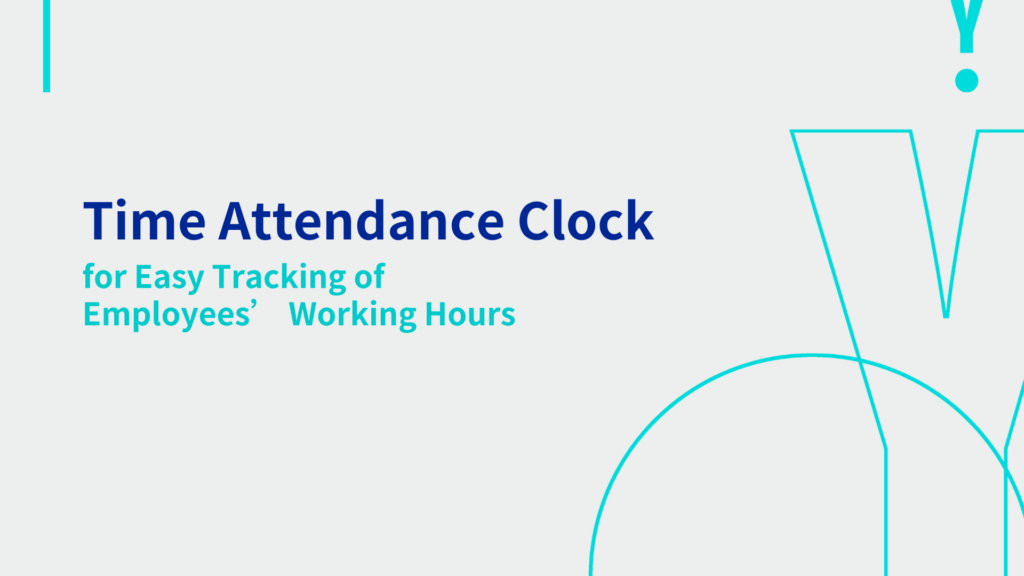
Many businesses still rely on outdated methods to track employee hours. Therefore, this results in payroll errors, legal issues, and workforce inefficiencies. Manual spreadsheets, paper timesheets, or unintegrated systems cause inaccuracies and waste time. Worse, these issues can harm employee trust and damage workplace morale.
Inaccurate hour tracking leads to overpaying or underpaying employees, which directly affects your bottom line. Not to mention, HR teams often get overwhelmed with payroll disputes and corrections. Hence, this takes up valuable time that could be spent on strategic growth.
Thankfully, with today’s modern time attendance clock systems, businesses can transform how they manage employee attendance. These tools ensure accurate, real-time tracking that reduces errors and boosts overall productivity.
So, let’s explore how easy it can be to track work hours effectively—streamlining payroll, ensuring compliance, and strengthening workforce management from the ground up.
- Why Accurate Time Tracking Matters in Modern Businesses?
- Traditional Vs. Modern Time Tracking: A Quick Comparison
- Key Features of An Efficient Time Attendance Clock System
- How Does Time Tracking Support Workforce Management?
- Common Payroll Issues Solved by Time Tracking
- Compliance As Well As Legal Accuracy with Time Tracking
- Boost Productivity through Visibility & Accountability
- Cloud-Based Time Tracking for Remote & Hybrid Teams
- Choosing The Right Time-Tracking Tool for Your Business
- Real Business Use Cases of Efficient Time Tracking
- Final Thoughts
Why Accurate Time Tracking Matters in Modern Businesses?
Accurate time tracking is no longer optional. It impacts payroll accuracy, compliance, and employee satisfaction. Even small errors in tracking can result in costly fines or labour disputes. Thus, businesses need precision and transparency in reporting.
Moreover, time tracking helps you understand labor costs better. So, you can plan budgets effectively and identify workforce inefficiencies in real time.
Additionally, it lessens the administrative load on human resources departments. With automated records, there’s no need for manual data entry or corrections. Most importantly, when employees know their time is tracked fairly, trust and accountability improve significantly across the workplace.
Traditional Vs. Modern Time Tracking: A Quick Comparison
Traditional methods may still work, but they’re slow, error-prone, and hard to manage at scale. Think paper logs or spreadsheets. Employees may forget to record hours, or worse, misreport them—intentionally or accidentally. This leads to significant payroll discrepancies.
On the other hand, modern systems like workforce time and attendance systems use automation, biometrics, and GPS-enabled tools to track work hours with precision. Moreover, modern systems update in real-time. Managers receive alerts for overtime, late arrivals, and shift changes instantly.
They also integrate with payroll software, reducing duplicate data entry and streamlining compensation processes. Clearly, switching to modern time-tracking tools offers both operational efficiency and payroll accuracy.
Key Features of An Efficient Time Attendance Clock System
Not all time-tracking tools are created equal. A truly efficient solution offers several essential features that simplify workforce management.
- Real-Time Clock-In & Clock-Out
Employees can use mobile apps or biometric systems to record their work hours instantly. This ensures accuracy and reduces buddy punching.
- Location-Based Tracking
For remote or field employees, GPS-based tracking verifies they’re clocking in from the correct work site. Hence, it prevents time theft.
- Integration with Payroll Systems
A good time-tracking tool seamlessly integrates with your payroll software. This ensures error-free and on-time salary disbursement.
- Smart Analytics And Reporting
Get detailed reports on employee hours, overtime, late arrivals, and more. Use this data to optimise scheduling and also boost efficiency.
- Notifications & Alerts
Receive instant notifications for missed punches or unauthorised overtime. Thus, a time attendance clock helps in addressing issues before they become major problems.
How Does Time Tracking Support Workforce Management?
Workforce management isn’t just about attendance; it’s about optimising labour productivity and ensuring fairness. That’s where tracking plays a vital role.
With proper data, managers can create fair schedules, monitor workload distribution, and prevent employee burnout. Time-tracking tools also provide visibility into team performance. This supports better project planning and workload balancing.
Moreover, tracking systems promote accountability. Employees are more likely to stay productive when they know time is monitored. This fosters a culture of responsibility, where both employees and management align their efforts for shared goals.
Common Payroll Issues Solved by Time Tracking
Payroll issues can frustrate both employees and employers. So, let’s explore how effective time tracking can eliminate these common concerns.
Payroll Discrepancies
Automated time-tracking ensures there’s no guesswork. Every hour worked is recorded accurately, reducing disputes and complaints.
Overtime Miscalculations
Real-time monitoring identifies when employees exceed standard hours. This helps avoid unauthorised overtime and supports labour law compliance.
Inaccurate Leave Management
Many systems include vacation and sick leave tracking. This ensures only eligible paid time off is counted in payroll processing.
Misaligned Pay Periods
With integrated systems, HR can match tracked hours directly with pay periods, avoiding last-minute data mismatches or delays. Hence, consider integrating the best workforce time and attendance system for your office.
Compliance As Well As Legal Accuracy with Time Tracking
Labour laws often require accurate hour logging. Non-compliance may lead to audits, lawsuits, or heavy fines for your business. Thankfully, modern systems provide tamper-proof records. They create a transparent audit trail for every employee’s time history.
Some tools are also built to comply with regional labour laws. This ensures your business meets requirements like breaks, overtime, and holidays. Having this digital documentation proves that your business is fair, legal, and responsible in its payroll practices.
This protects your business while keeping employees confident in how their work hours are handled.
Boost Productivity through Visibility & Accountability
- When employees see their hours tracked transparently, they tend to be more punctual, responsible and focused on their tasks.
- You can also use time data to analyse performance trends. Which departments need more support? Where can efficiency be improved?
- Managers can adjust workflows, reallocate tasks, or provide coaching based on insights from tracked data.
Ultimately, time tracking helps turn data into action, guiding strategic decisions that uplift your business’s productivity.
Cloud-Based Time Tracking for Remote & Hybrid Teams
As remote and hybrid models grow, businesses need flexible tools to manage distributed teams without sacrificing accountability. Cloud-based tracking allows employees to punch in from anywhere. Location stamps and geofencing in the time attendance clock ensure transparency as well as trust.
Managers can monitor team availability in real time and allocate resources efficiently across locations. Additionally, cloud tools sync across devices. So, whether it’s desktop, mobile, or tablet, everyone stays connected and in sync.
For hybrid teams, this flexibility is crucial. It also ensures no one slips through the cracks, regardless of where they work.
Choosing The Right Time-Tracking Tool for Your Business
With so many options out there, how do you choose the right time-tracking tool for your business? Consider these important factors.
- Ease of Use: The system should be simple for both employees and managers. Intuitive design ensures fast adoption and fewer errors.
- Scalability: Choose a solution that grows with your team. Whether you have 10 or 10,000 employees, it must adapt easily.
- Integration Capabilities: The tool should integrate with payroll, HR, and scheduling software for a seamless data flow across platforms.
- Support & Training: Look for vendors who offer training resources, onboarding help, and 24/7 customer support. This ensures smooth implementation.
- Security Standards: Data security is non-negotiable. The platform should use encryption and meet data protection regulations to protect employee information.
Real Business Use Cases of Efficient Time Tracking
Still wondering if this investment is worth it?
Let’s highlight the key benefits of it; you’ll notice almost immediately.
- Fewer payroll disputes and faster processing
- Improved productivity through data-driven decisions
- Greater transparency and accountability in the workplace
- Better compliance with labour laws and regulations
- Empowered HR departments that focus on growth, not corrections
When you add up these benefits, it’s clear. Accurate time tracking does far more than just measure hours.
Final Thoughts
Your employees are your greatest asset, and their time deserves to be treated with care, respect, and precision. Therefore, by investing in the right time-tracking tools, businesses ensure accurate payroll, better compliance, and improved employee satisfaction.
Ultimately, you gain more than just data, you gain the trust, loyalty, and efficiency of a well-managed workforce. So, don’t wait until payroll problems pile up. Switch to a smart, simple, and scalable time attendance clock solution today.
Want to learn more about the best tools for your business?
Then, let’s explore your options and schedule a quick consultation with YOOV now!
Connect with YOOV

WhatsApp:Click Here
Email:hello@yoov.com
Website:https://www.yoov.com/